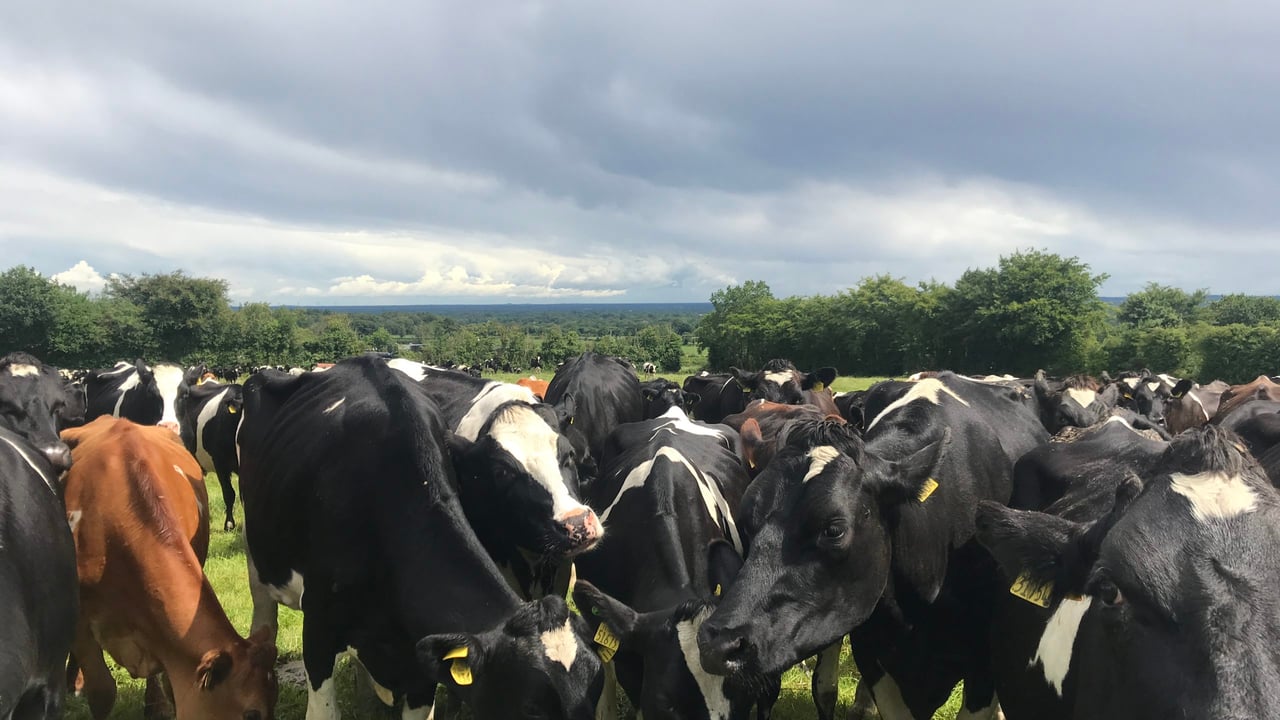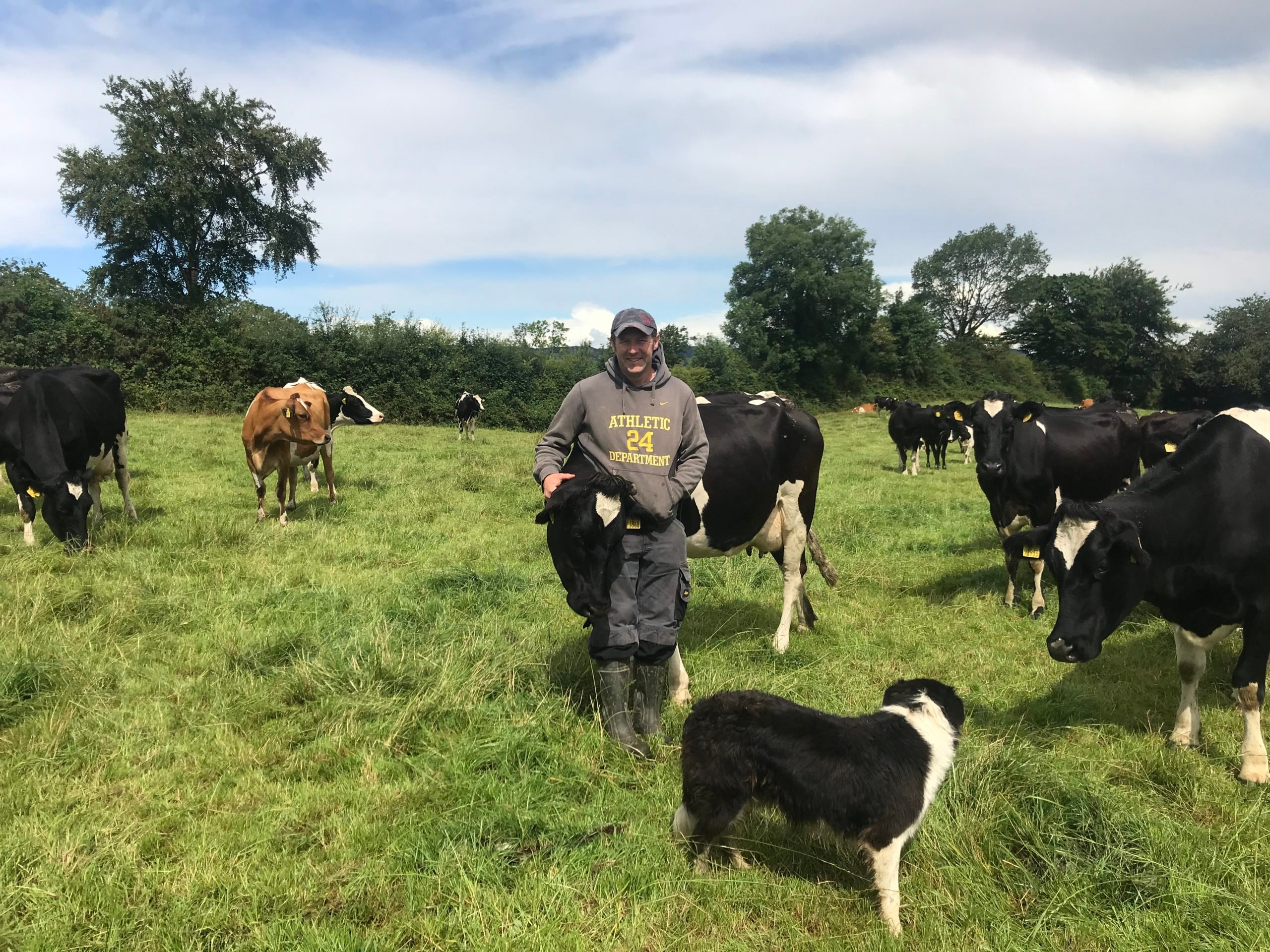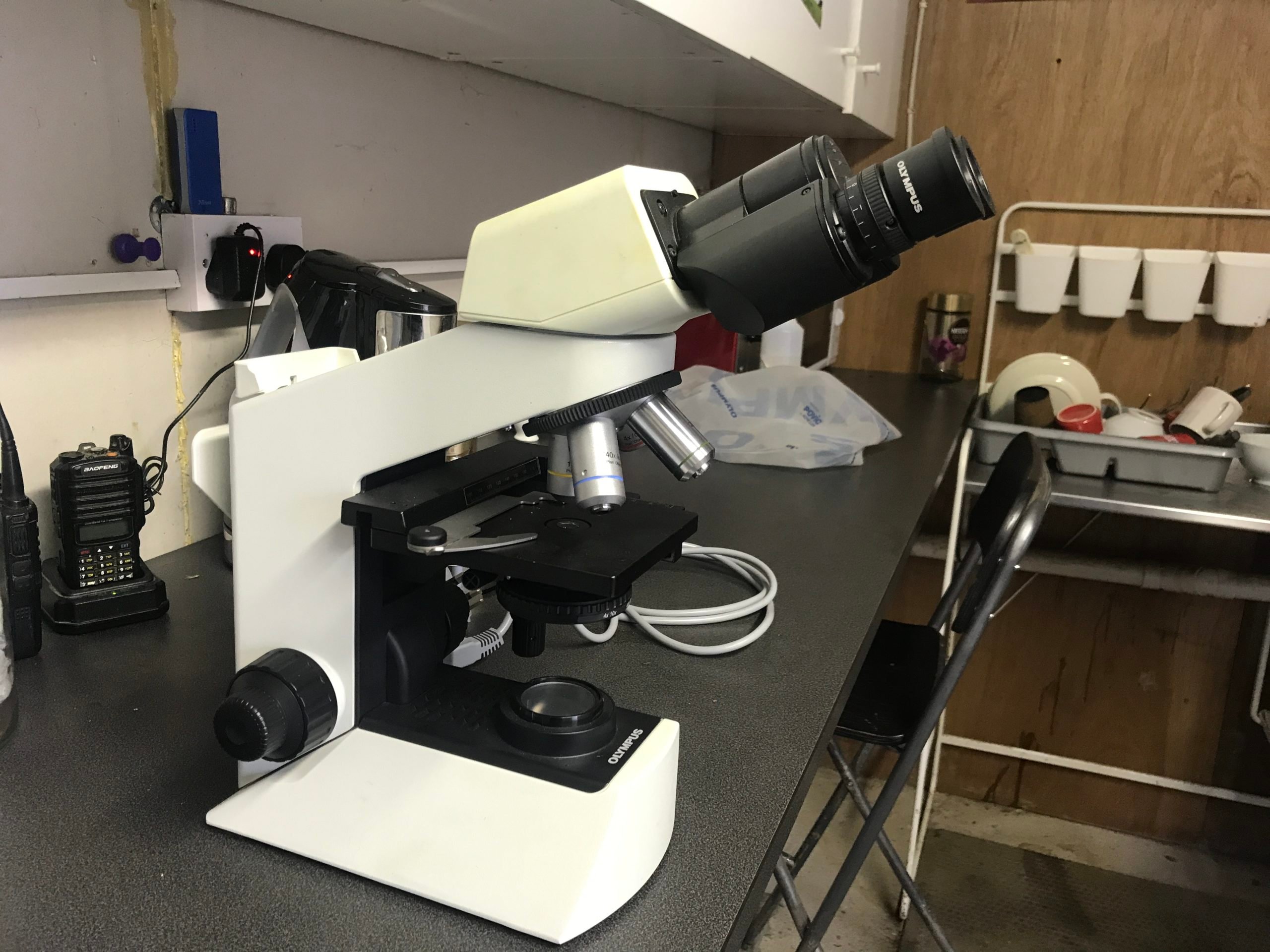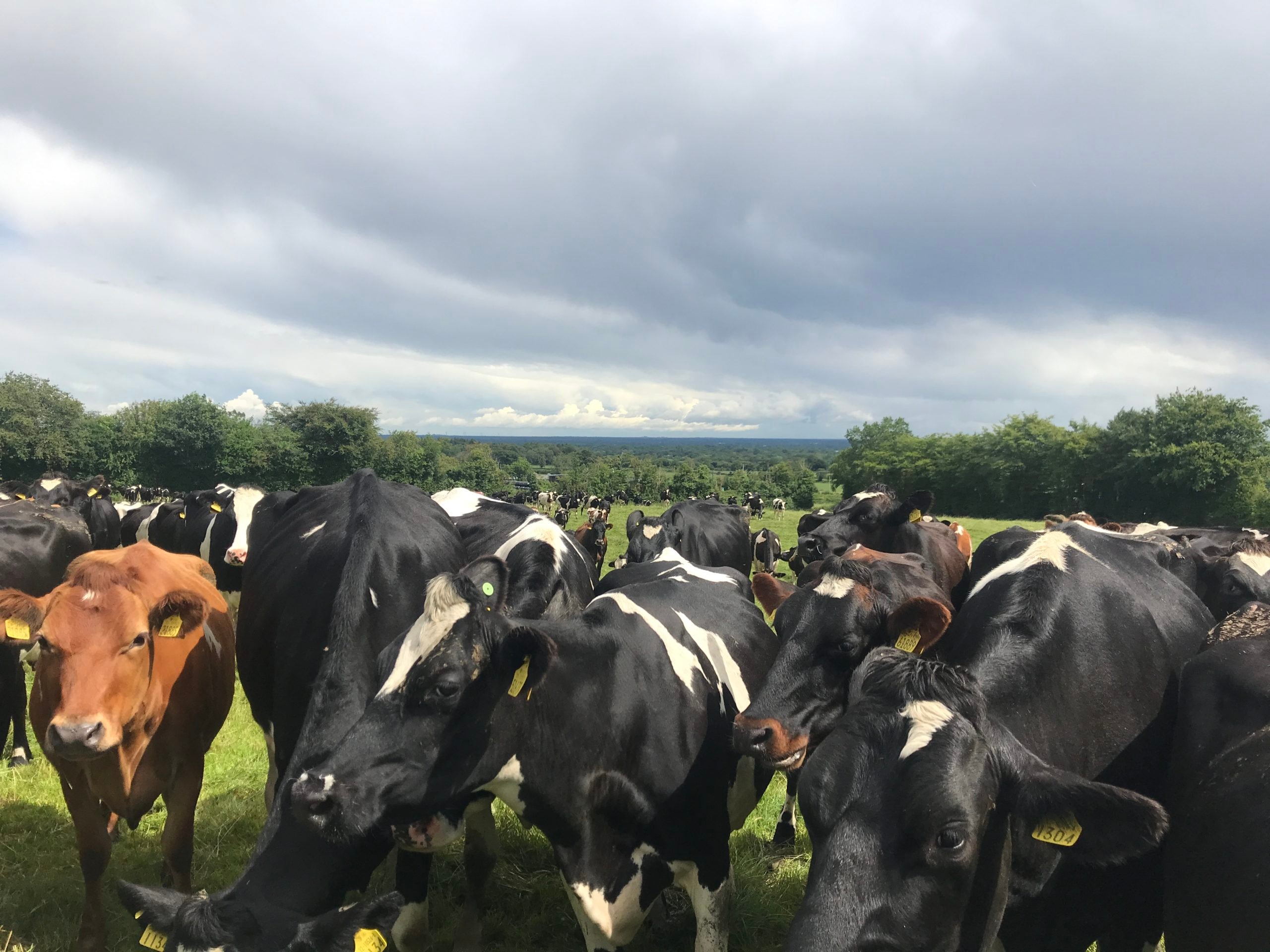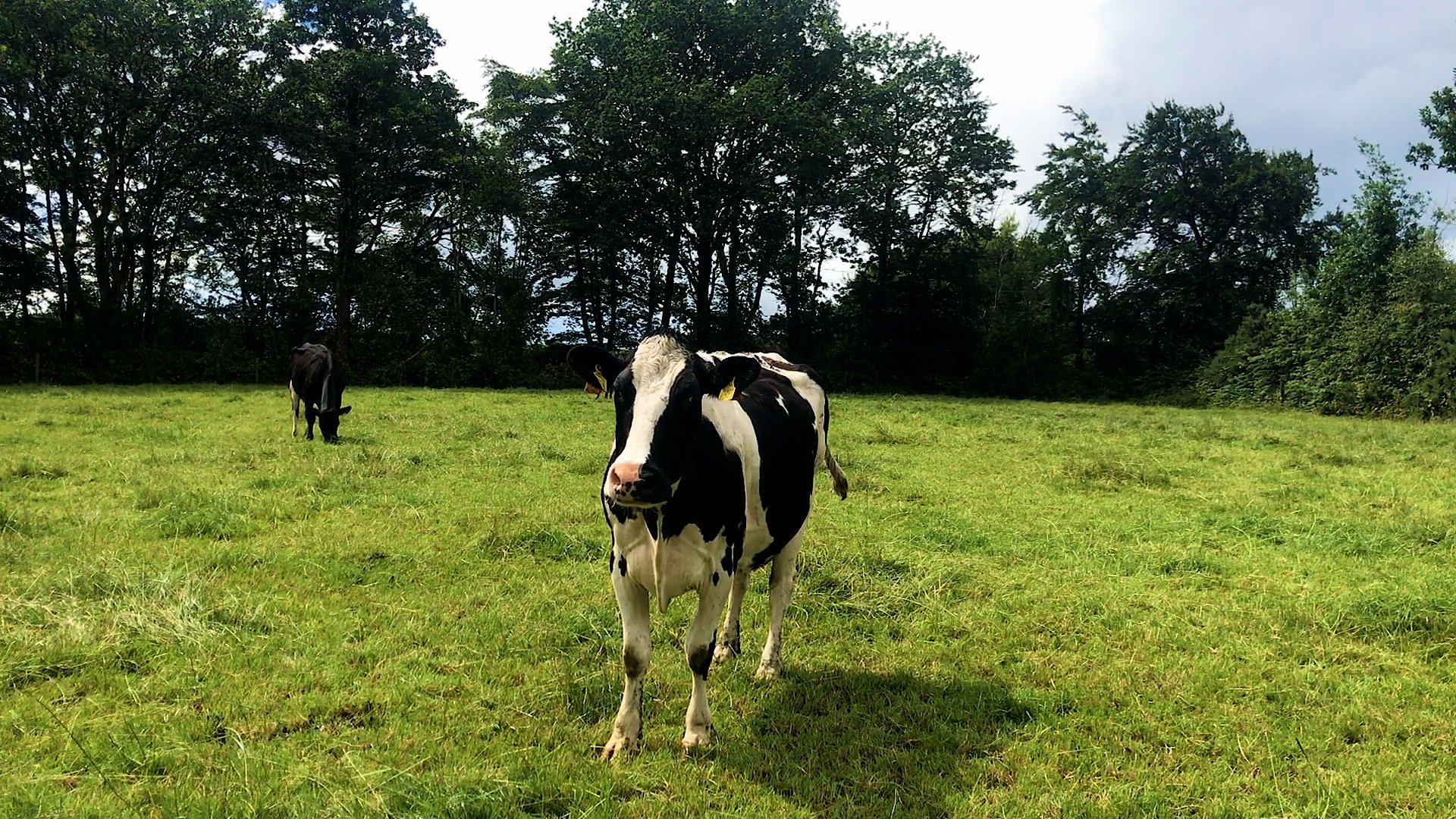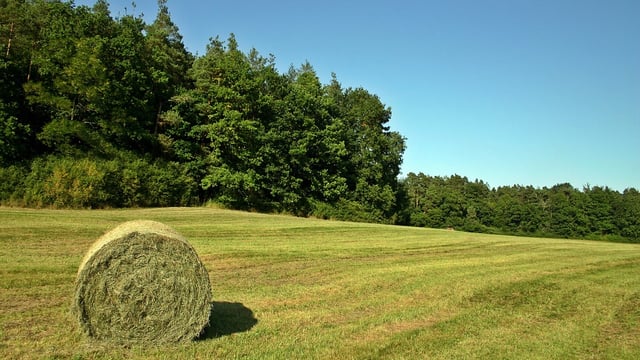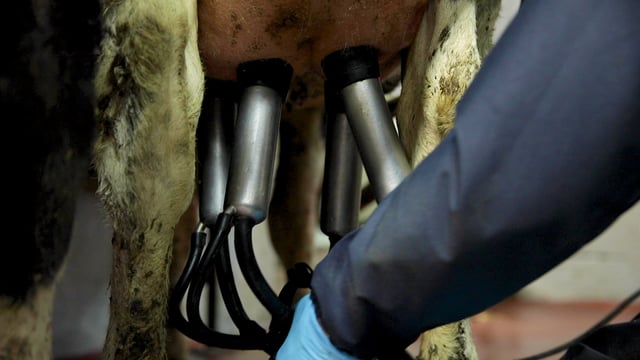Dairy Focus: Using dung beetles to manage parasites in Co. Laois
In this week’s Dairy Focus, Agriland made the trip to meet Bruce Thompson on his dairy farm located in the shadow of the Slieve Bloom mountains.
On the farm near Ballyfin, Co. Laois, Bruce and his father are milking 300 cows - along with completing some interesting work with dung beetles.
Speaking to Bruce about some of his background and why he returned home to farm, he said: ''I returned home in 2001 to farm alongside my father; I had been away studying engineering in Cork Institute of Technology (CIT).
"Dad was milking around 54 cows here and in the space of two years he lost 48 of them to tuberculosis [TB]. So I came home to give him a hand before I started my career and never left.
"I officially took over in 2012. We were milking around 80 cows at that time. We then started gearing up for the abolition of quotas."
Bruce continued: "Since then, the herd has grown to 300 cows, with the biggest increase coming in the last two to three years.
"We phased out the sheep and beef and focused on the dairy. We now only have three groups of animals on the farm -milking cows, bulling/in-calf heifers and heifer calves.
"We farm 360ac, we own about 180ac and the milking platform is 250ac. Originally we would have had 80ac of a milking block, with a number of blocks added on over the last number of years."
Among the biggest changes made to the farm has been the infrastructure, and in particular the grazing infrastructure. Bruce explained: "We removed all the paddocks on the farm.
"We found paddocks were never the right size; it was the best decision we very made. With the herd size increasing we firstly extended the roadways and then widened them.
"We have no building designed to match the current size of the herd, with bits added on over the years to accommodate cows."
Bruce continued: "For housing, we have some indoor and outdoor cubicles. It looks like this year we will be housing some cows in loose sheds.
"In 2018, we built a 44-point Waikato rotary milking parlour. It was the second Waikato rotary parlour installed in Ireland. It has made milking the cows much more efficient and easier."
Commenting further on the grazing infrastructure on the farm, Bruce said: "Our aim was to give cows a 36-hour grazing allocation, with a pre-grazing yield of 1,400kg/dry matter (DM)/ha.
"The problem with that is, we are milking a large herd of cows on the side of a mountain and some of the fields are only 1ac in size.
"Another issue we have is that you might get a grazing and a half from a field. So we tried giving them the full grazing, then moving them halfway through their second grazing.
"The problem we found was that they would then get unsettled if they could see you; they want to be moved."
Commenting on this further, Bruce said: "So this spring, we tried the batch latch and it worked well for the first rotation. But the issue we found then was they were not cleaning out paddocks properly because they were looking for the batch latch and waiting for it to open.
"It is a symptom of expansion having to manage the hedgerows and ditches while achieving residuals. You cannot just remove them all so you have to work around them as best as you can."
Moving to the breeding policy on the farm and cow type that Bruce uses, he stated: "The base herd is a high economic breeding index (EBI) Holstein cross-British Friesian-type cow.
"We made the decision to crossbreed the cows to Jersey in the spring of 2017. Since then we have only been using Jersey sires.
"Without producing a large volume of milk, the only animals we could come up with were Jersey sires. We also wanted a smaller cow that would suit our soil type and is easier to manage.
"The fertility was not an issue with our cows so that was not a reason for switching, the calving season is a lot easier - you have less cows needing assistance."
Commenting on the breeding goals of the herd, he stated: "Going forward, we want a 500kg cow producing 1.1 times their bodyweight in milk solids from a low level of concentrates.
"When we were expanding we kept some cows we probably shouldn't have and they have pulled back the averages.
"We have not used sexed semen yet, but we are going to start looking into using sexed semen."
Speaking about how Bruce became interested in working with dung beetles, he said: "I always had an interest in animal health, myself and my then girlfriend, now wife, were in South Africa on safari, back in 2003.
"We saw the dung beetles out there rolling the dung balls like you see on the TV. I thought to myself; 'wouldn't they be great back in Ireland to get rid of the dung from the cows'. I never thought anymore of it.
"One day myself and dad were dosing calves and I thought that we were dosing calves a lot more frequently. So we decided to change to a more diagnostic approach."
Bruce continued: "A few years later I had a chance conversation with entomologist Sally-Ann Spence about dung beetles. At the time I did not realise that they were on the farm.
"The worm dose actually kills the beetles. The less wormer you use, the more beetles you will have and reduce the need for wormers."
The dung beetles remove the moisture from the dung, which reduces the opportunity for parasites to develop. This reduces the burden of parasites in a field and hinders their development.
"I have become very interested in this and applied for a Nuffield Scholar. I was very honoured to have been awarded a Nuffield Scholar to travel the world and research dung beetles.
"I was lucky enough to be able to travel to some parts of Australia. I am currently writing up my report on the research."
Commenting on how they use dung beetles on the farm to control parasites, Bruce stated: "We have reduced anthelmintic usage; the cows have not been wormed since 2017. The bulling/in-calf heifers have not been wormed in three to four years.
"Once they go above our threshold, we would worm the calves. We bring in the calves, weigh them, and based off their weight we decide if they need to be dosed or not."
Bruce continued: "The calves have been wormed once this year and only half of the calves were wormed. We have found that the calves are thriving better than they ever did.
''They would usually be on an out-farm, but we have them on the home block currently to graze a suitable field.
"They are moved every three days and back-fenced. We do not have any designated calf fields. As the year goes on and the calves become older, we would begin to stress the calves a little and graze them in paddocks with higher levels of fouling.
"We are constantly monitoring the burden in the cows, through milk sampling and faecal egg sampling."
Speaking to Bruce about how dung beetles can be used to manage parasites in the future, he said: "We have been trying to control parasites for the last three generations and we still have not managed it.
"Resistance to wormers is increasing at an alarming rate in this country, with only three base products used for controlling worms in cattle.
"Only one of these products is suitable for lactating cows. If you have resistance to a product on your farm, you're in trouble.
"Parasites are starting to win the battle, so we have to become a little smarter in using the resources on your farm to control them. We have to keep them working."
Looking to the future of the farm and future development plans of the farm, Bruce stated: "I have been home here for 20 years now. We have probably reached the max cow number for our current landbase, if we gain access to more land we might consider further expansion.
"We appealed the allocation of milk we were assigned, so will have to wait and see what the outcome of that will be. We had a few issues with TB, having a young herd, and we took on a lease before the peak milk restrictions were announced.
"My kids are only five and six, so it is hard to tell if they will have any interest in the farm yet. If they do have an interest, I will encourage them and help to guide them."

